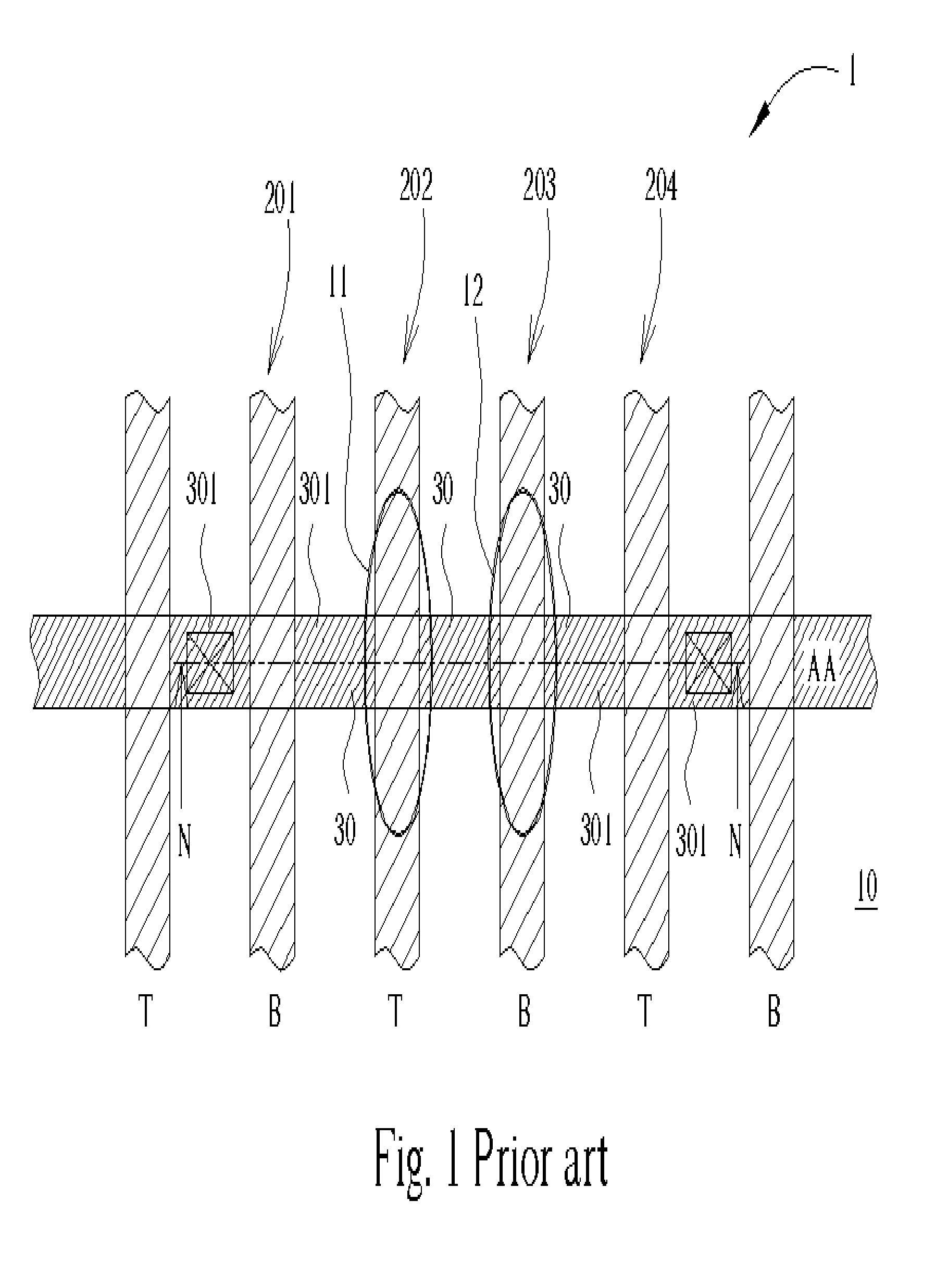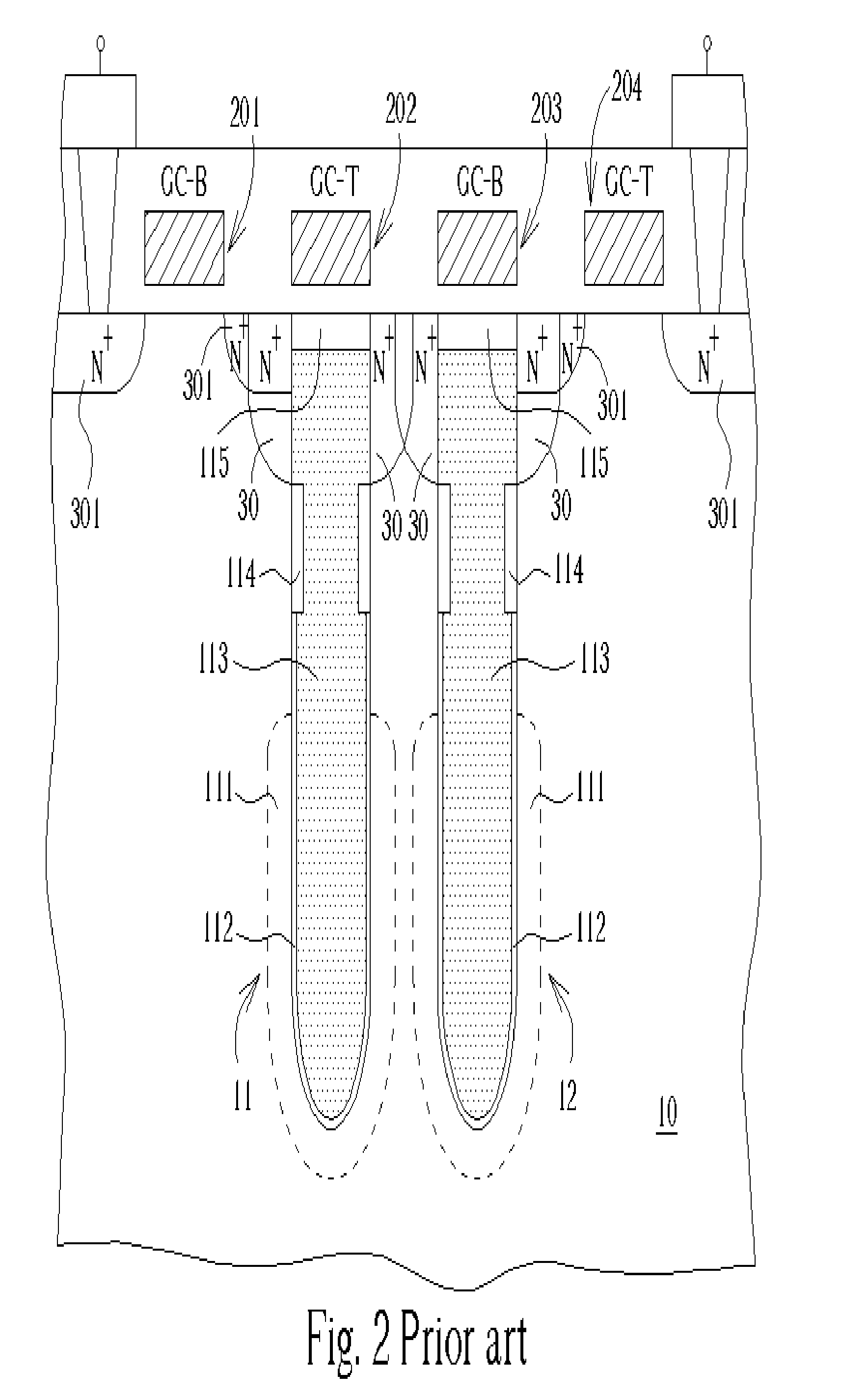Wafer acceptance testing method and structure of a test key used in the method
a testing key and acceptance technology, applied in semiconductor/solid-state device testing/measurement, semiconductor/solid-state device details, instruments, etc., can solve the problems of difficult for an inspector to judge the gc-dt misalignment merely according, and the prior art gc-dt misalignment evaluation method is not accura
- Summary
- Abstract
- Description
- Claims
- Application Information
AI Technical Summary
Benefits of technology
Problems solved by technology
Method used
Image
Examples
Embodiment Construction
[0015] Please refer to FIG. 3 to FIG. 9. FIG. 3 to FIG. 9 are schematic diagrams illustrating the fabrication processes of making a test key structure for monitoring GC-DT misalignment in accordance with one preferred embodiment of the present invention, wherein FIG. 4 is a cross-sectional view along line A-A of FIG. 3; FIG. 6 is a cross-sectional view along line B-B of FIG. 5; and FIG. 8 is a cross-sectional view along line C-C of FIG. 7. Through FIG. 3 to FIG. 9, similar numerals designate similar devices, regions or elements set forth in FIG. 1 and FIG. 2. The novel wafer acceptance testing (WAT) method using the test key structure of the present invention will also be explained in detail with reference to FIG. 8 and FIG. 9.
[0016] As shown in FIG. 3, a finger-type deep trench layout 20 is fabricated simultaneously with the memory array capacitors (not shown) in a substrate 10 such as a P type silicon substrate. The deep trench layout 20, which is fabricated within a peripheral a...
PUM
 Login to View More
Login to View More Abstract
Description
Claims
Application Information
 Login to View More
Login to View More - R&D
- Intellectual Property
- Life Sciences
- Materials
- Tech Scout
- Unparalleled Data Quality
- Higher Quality Content
- 60% Fewer Hallucinations
Browse by: Latest US Patents, China's latest patents, Technical Efficacy Thesaurus, Application Domain, Technology Topic, Popular Technical Reports.
© 2025 PatSnap. All rights reserved.Legal|Privacy policy|Modern Slavery Act Transparency Statement|Sitemap|About US| Contact US: help@patsnap.com



